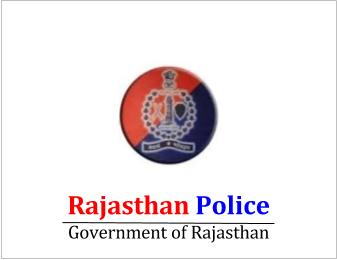NEW! SSC CGL Notes | CGL Papers PDF
(Syllabus) Rajasthan Police Exam : Post of Assistant Sub-Inspector (Technician/Cipher) Police Telecommunications

(Syllabus) Rajasthan Police Exam : Post of Assistant Sub-Inspector (Technician/Cipher) Police Telecommunications
SYLLABUS FOR WRITTEN EXAMINATION FOR DIRECT RECRUITMENT TO THE POST OF ASSISTANT SUB INSPECTOR (TECHNICIAN/ CIPHER), POLICE TELECOMMUNICATIONS
PART —A (Marks-150)
General Knowledge and General Science
1. Current events, important organizations, institutions, personalities, games and sports at International, National and State level.
2. Indian National Movement with special reference to non-cooperation movement, Civil disobedience and Quit India Movement. Contribution of Rajasthan in freedom struggle. Integration of princely States and formation of Rajasthan.
3. World and Indian Geography: Physical, Social and Economic Geography.
4. Geography of Rajasthan: Physical, edaphic and biotic features, Natural resources : minerals, water, energy, wildlife, livestock and vegetation.
5. Economic Development and Planning in Rajasthan: Broad features of X and XI Five Year Plans. Programmes and Institutions for Development. Major programmes for removal of poverty and unemployment. Sustainable Development, Demographic features.
6. Art and Culture of Rajasthan : Fairs, Festivals, Folk Dances, Customs, Dialects, Dresses, Ornaments, Folk music and instruments, Paintings, Religious beliefs and saints. Important tourism places.
7. Indian Polity and Governance: Constitution, Political System, Panchayati Raj, Elections, Human Rights and Right To Information. Police Administration and Organization in Rajasthan.
8. General Science: Elementary knowledge and understanding of science including matters of everyday observation and experiences(up to X standard). Basic Laws of Science. Human diseases: sources and types of diseases, communicable and non-communicable diseases. Prevention and control measures of AIDS, TB, Jaundice, Typhoid, Malaria and Polio. 9. Basic knowledge of computer and its applications, cyber crimes.
PART — B (Marks-250)
1. Electromagnetism: Magnetic Induction, permeability , susceptibility, Intensity of magnetization and Relation between them. Principle of super position. Coulomb's Law, Intensity of electric field, Lines of forces, potential-difference. Ampere's Law and its application. Potentiometer and its application, measurement of Low resistance, Internal-resistance of a cell, measurement of currents and calibration of volt-meter and Ammeter.
2. AC Theory: Principle of production of A.C. current and measurement of A.C. current by hot wire Ammeters. Instantaneous, peak, average and R.M.S. value of A.0 current and voltages. Behavior of LCR circuits in A.C. and phase relations between voltage and current, reactance, impedance, resonance, power factor, quality factor, watt less current.
3. Circuit analysis: Networks-some important definitions, loop and nodal equation based on D.C. and A.C. circuits (Kirchhoff's Law). Four terminal networks: Ampere volt conventions, open, close and hybrid parameters of any four terminal network, Input, output and mutual impendence for an active four terminal network. Various circuit theorems: Superposition, Thevenin, Norton, reciprocity, compensation, maximum power transfer and Miller theorems.
4. PN Junction: Semiconductor, P and N type of material, charge densities in N and P materials: Conduction by drift and diffusion of charge carriers, formation and working of PN junction diode, reverse and forward characteristics.
5. Rectifiers: Half-Wave, full Wave and bridge rectifier: .calculation of ripple factor, PIV, efficiency and regulation; Filters : series inductor, shunt capacitor, L section and rt. — section filters. Voltage regulation: Voltage regulation and voltage stabilization by Zener diode, voltage multiplier.
6. Transistors: Notations and volt-ampere characteristics for bipolar junctions transistor, Concept of load line and operating point, Hybrid parameters. CB, CE, CC configurations. Junction field effect transistor (JEFT) and metal oxide semiconductor filed effect transistor (MOSFET). Circuit symbols. biasing and volt- ampere characteristics. Source follower operation of FET as variable voltage resister.
7. Transistor Biasing : Need of bias and stability of Q point, stability factors, and various types of bias circuits for thermal bias stability: fixed bias, collector to base feedback bias and four resistor bias.
8. Amplifiers : Analysis of transistor amplifiers using hybrid parameters and its gain-frequency response: Cascade amplifiers, basic idea of direct coupled and R.C. coupled amplifiers, Differential amplifiers; Amplifier with feedback: Concept of feedback, positive and negative feedback, voltage and current feedback circuits. Advantage of negative feedback: Stabilization of gain, effect of negative feedback on output and input resistance, reduction of nonlinear distortion effect on gain - frequency response.
9. Oscillators: criteria for self-excited and self-sustained oscillation, circuit requirement for build-up of oscillation Basic transistor oscillator circuit its analysis, colpitt's and Hartley oscillators. R.C. oscillators , crystal oscillators and its advantage.
10.Logic circuits : Logic fundamentals : AND, OR,NOT,NOR,NAND,XOR, gates, Boolean algebra , De Morgan's theorem, positive and negative logic, circuit realization using DTL and TTL logic, simplification of Boolean expressions.
11.Electromagnetic Waves: Electromagnetic waves, energy density of EM waves, EM waves in different medium, spectrum of EM waves.
12.Computer fundamentals: Different number system, their radix conversion and arithmetic operations, Introduction to computers & related terminology, hardware fundamentals, basics of software, types of memory, fundamental of computer architecture, operating systems, application software, different computer network communications & connectivity, internet and its online resources.
Courtesy: Rajasthan Police


